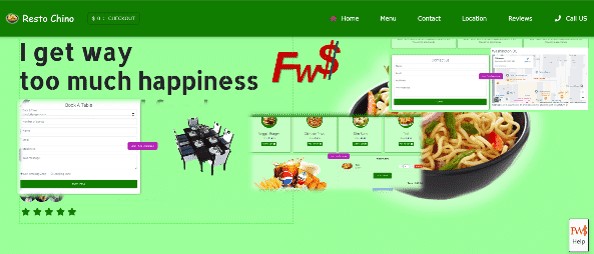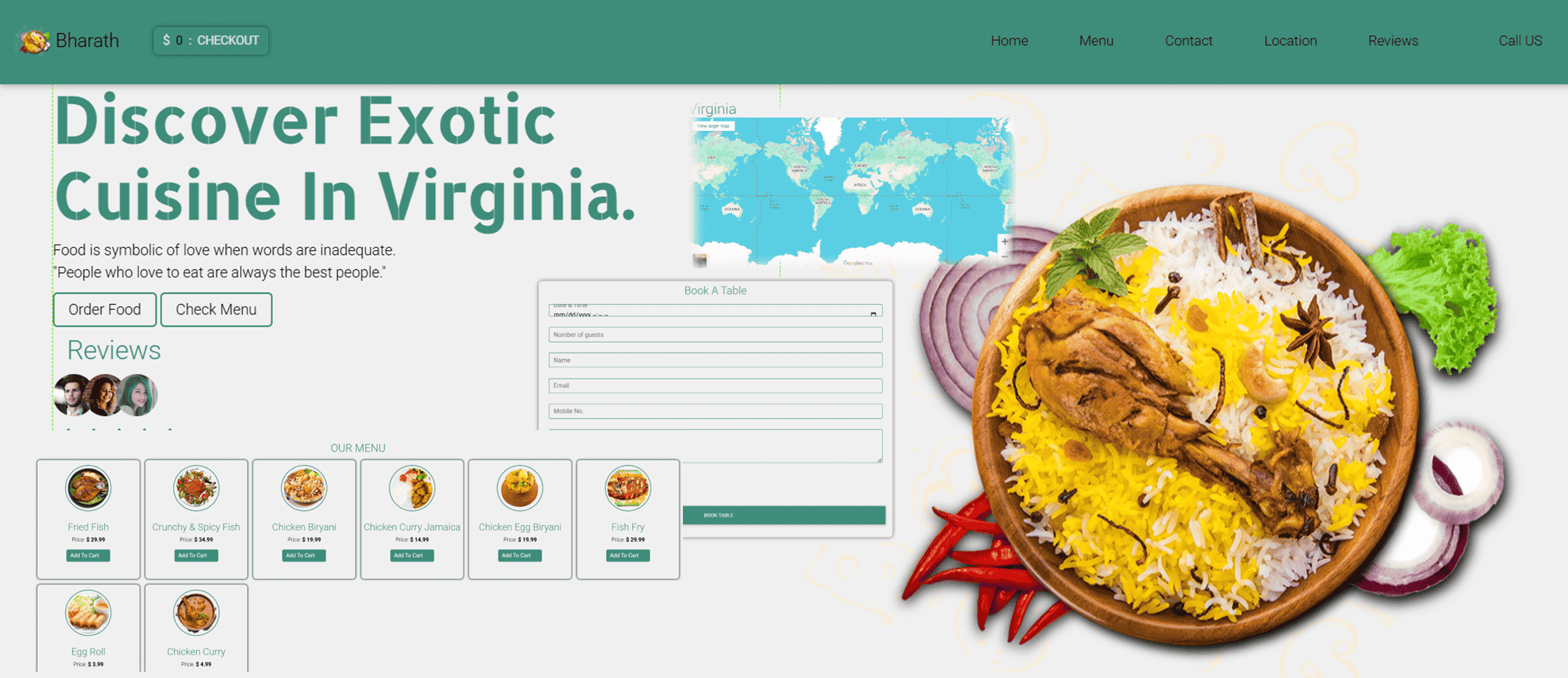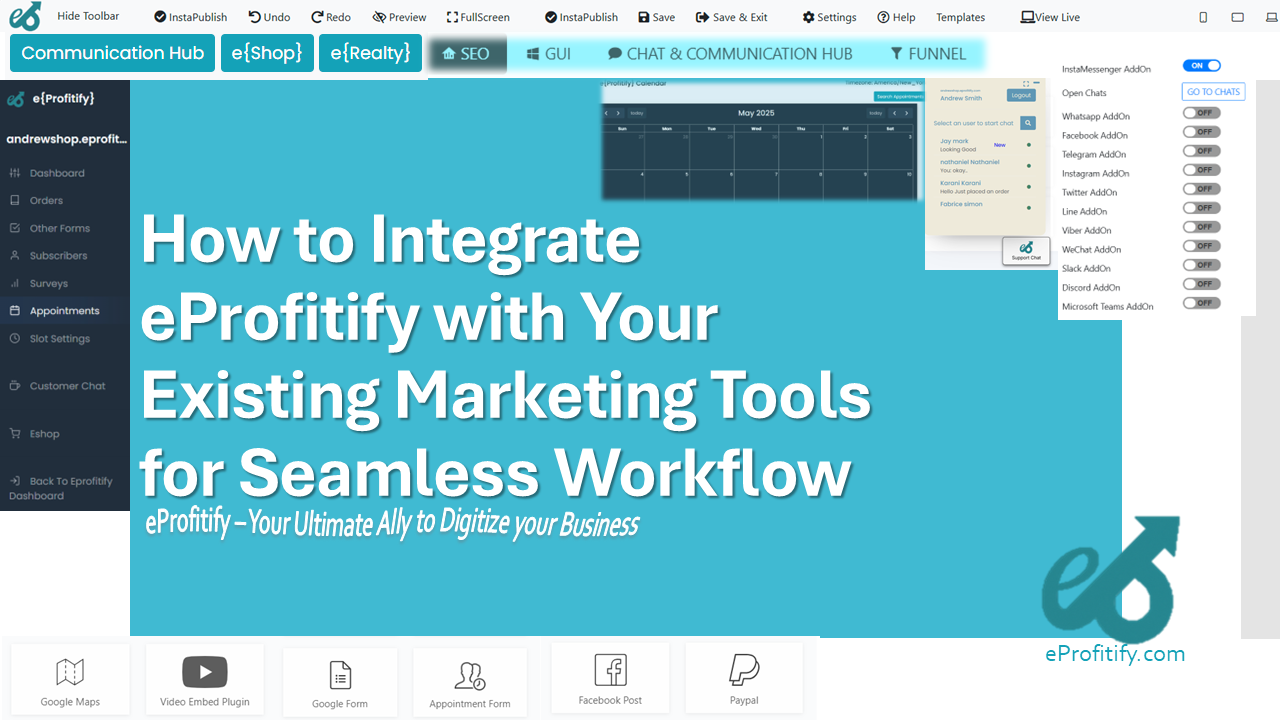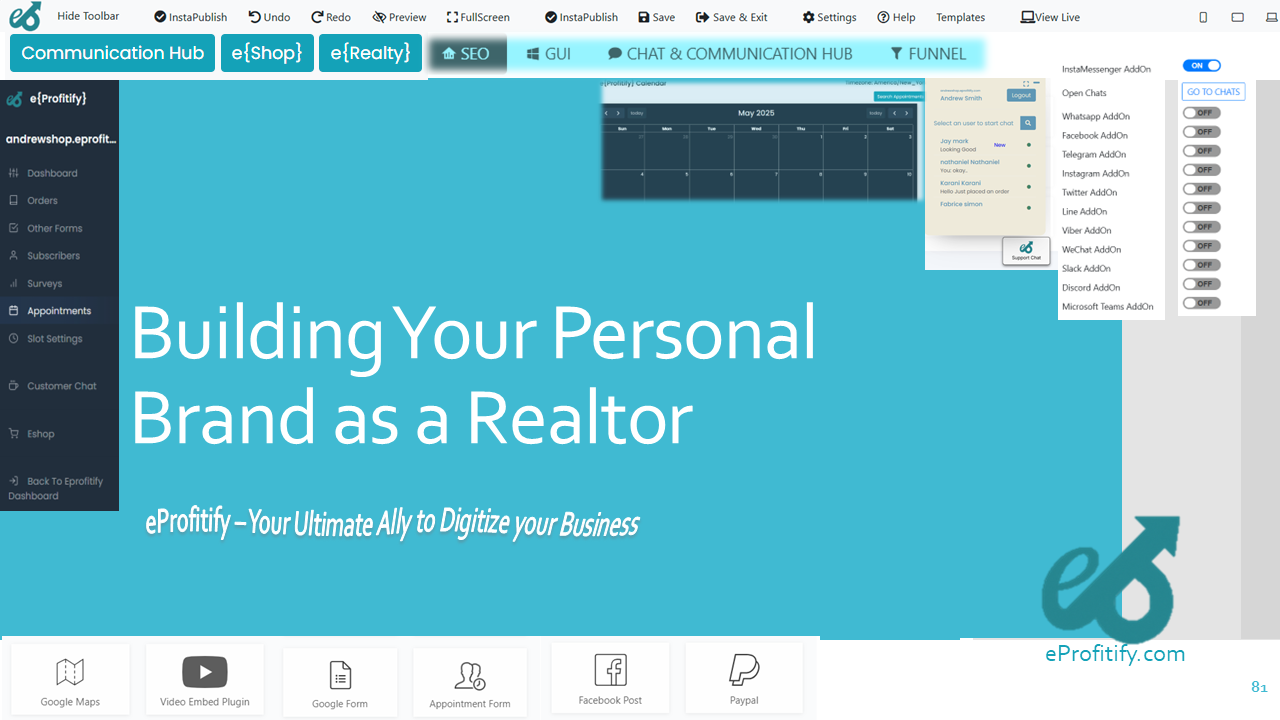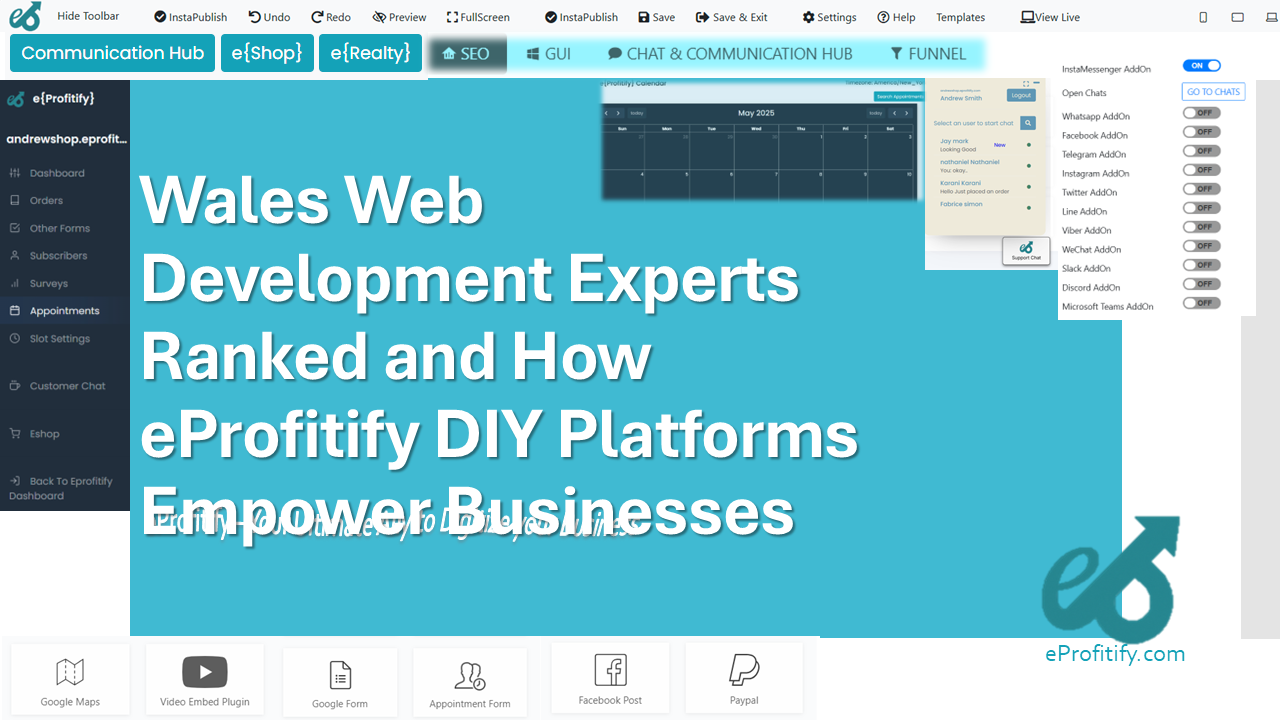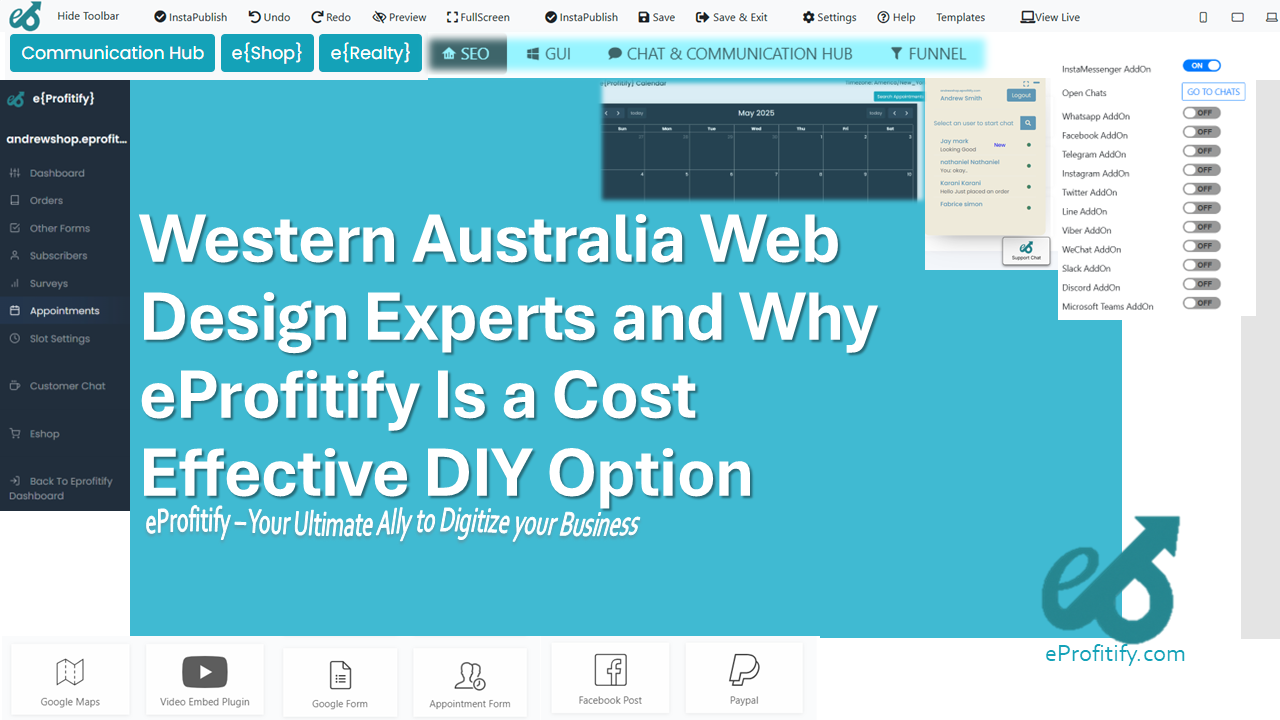How to Build a Scalable Business Model for Your Food Truck
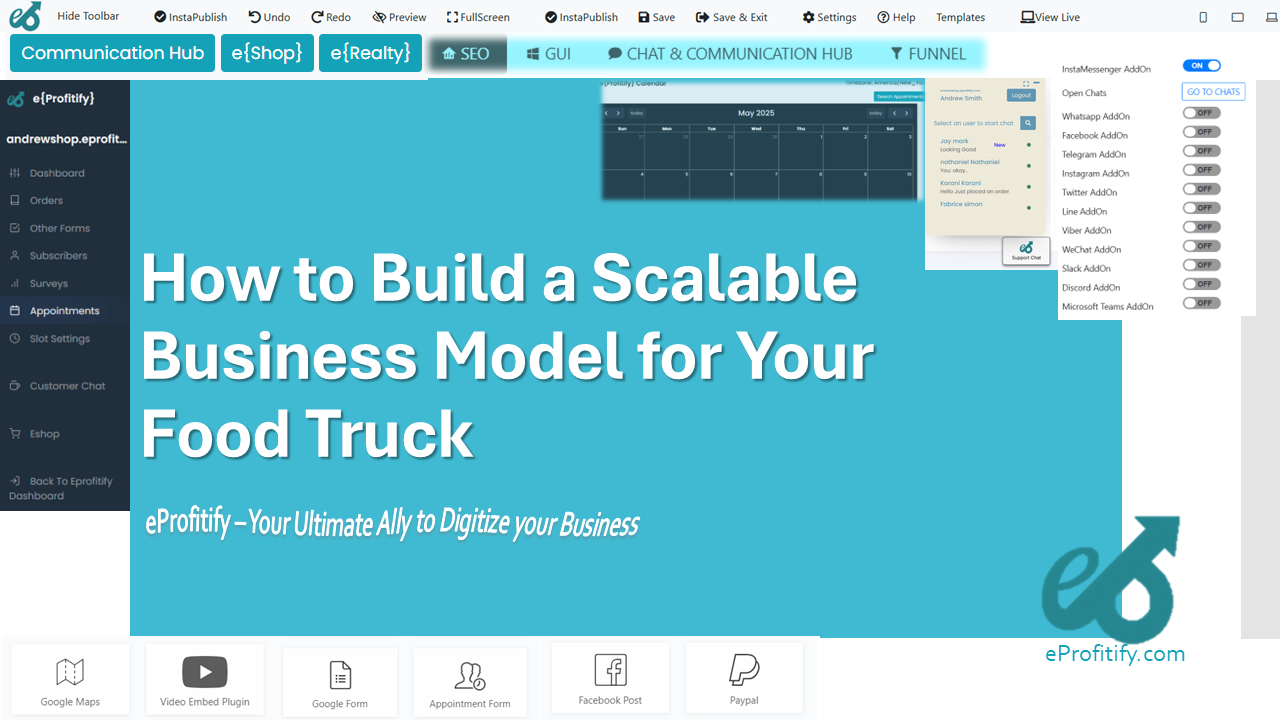
Schedule a LIVE Zoom call with an eProfitify Expert.
How to Build a Scalable Business Model for Your Food Truck
The food truck industry has exploded in popularity over the last decade, with the U.S. market alone growing at a CAGR of 6.5% from 2020 to 2023, reaching $1.2 billion in revenue (IBISWorld, 2023). This growth is fueled by low startup costs compared to traditional restaurants and shifting consumer preferences for quick, diverse, and gourmet meals. However, scaling a food truck business presents unique challenges—from operational inefficiencies to location dependencies. In this guide, we’ll explore strategies to build a scalable model, supported by actionable statistics and tools like eProfitify, a leading website publishing and management platform that streamlines operations through features like instant messaging, appointment management, eCommerce, and CRM.
Understanding Scalability in the Food Truck Industry
Scalability means growing your business without proportionally increasing costs or complexity. For food trucks, this could mean expanding to multiple locations, diversifying revenue streams, or automating processes to serve more customers efficiently. However, 23% of food trucks fail within their first year due to poor location choices, inconsistent demand, and operational bottlenecks (SBA, 2022). To avoid these pitfalls, a strategic approach is critical.
Challenges to Scaling a Food Truck
- Location Dependency: Over 60% of food truck revenue relies on high-footfall areas, but securing permits and competing for prime spots can be costly.
- Operational Inefficiencies: Manual order-taking, limited kitchen space, and staffing challenges slow service during peak hours.
- Marketing Gaps: Without a digital presence, trucks struggle to retain customers or promote new menus.
- Inconsistent Revenue: Seasonal demand and weather disruptions make cash flow unpredictable.
Strategies for Building a Scalable Model
1. Streamline Operations with Technology
Efficiency is key to scalability. Implementing tools like eProfitify can automate administrative tasks, allowing owners to focus on growth.
- Instant Messaging: Resolve customer queries in real-time via integrated chat, reducing missed orders.
- Appointment Management: Schedule catering bookings and pre-orders seamlessly, minimizing no-shows.
- CRM Integration: Track customer preferences and order histories to personalize promotions, boosting retention. Studies show personalized marketing can increase sales by 20% (Salesforce, 2023).
Statistic: Food trucks using CRM tools report a 30% higher customer return rate compared to those relying on manual systems (Toast, 2022).
2. Expand Your Digital Presence
A strong online footprint drives scalability by reaching customers beyond your physical location:
- Ecommerce Integration: Allow customers to pre-order via your website or app. Post-pandemic, 45% of food truck revenue comes from digital orders (Square, 2023).
- Social Media Marketing: Share real-time location updates and menu specials. Food trucks with active Instagram accounts see 2x faster growth (Hootsuite, 2023).
- Loyalty Programs: Use eProfitify’s CRM to offer rewards, turning one-time buyers into regulars.
3. Leverage Data Analytics
Data-driven decisions minimize risks and maximize opportunities.
- Sales Trends: Identify top-selling items and optimize inventory. For instance, if tacos generate 40% of revenue, streamline your menu to focus on high-margin dishes.
- Customer Insights: Analyze peak hours and demographics to schedule routes strategically.
- eProfitify’s Dashboard: Track real-time metrics like order volume and customer feedback, enabling swift adjustments.
4. Build a Franchise Model or Multiple Trucks
Expanding to multiple trucks or franchising allows you to diversify revenue while maintaining brand consistency.
- Centralized Management: Use eProfitify to oversee menus, staffing, and finances across locations.
- Training Programs: Standardize recipes and service protocols to ensure quality.
- Statistic: Multi-unit food truck operators earn 2.5x more revenue than single-truck businesses (Food Truck Nation, 2023).
5. Partner with Local Businesses and Events
Collaborations amplify visibility and reduce location risks:
- Corporate Catering: Partner with offices for daily lunch services. Corporate contracts account for 25% of revenue for scalable food trucks (EventMB, 2023).
- Festivals and Markets: Book events through eProfitify’s appointment system to secure high-traffic gigs.
6. Invest in Off-Premise Revenue Streams
- Meal Kits and Merchandise: Sell DIY taco kits or branded apparel online via eProfitify’s eCommerce tools.
- Subscription Models: Offer weekly meal plans to ensure recurring revenue.
How eProfitify Enhances Scalability
eProfitify stands out as a holistic platform for food truck owners aiming to scale:
- Unified Dashboard: Manage orders, staff schedules, and customer interactions in one place.
- Instant Notifications: Alert customers when the truck arrives at their location.
- Integrated Payments: Process online and on-site payments securely.
- SEO-Optimized Websites: Attract local customers with mobile-friendly sites.
Conclusion
Scaling a food truck requires balancing operational efficiency, digital innovation, and strategic expansion. By leveraging data, diversifying revenue streams, and using scalable tools like eProfitify, owners can overcome industry challenges and build a sustainable business. With 72% of consumers prioritizing convenience and speed when dining (National Restaurant Association, 2023), now is the time to future-proof your food truck with a growth-focused model.
Final Statistic: Businesses using all-in-one platforms like eProfitify reduce administrative costs by 35% and increase customer satisfaction by 50% (Forbes, 2023).
Embrace technology, stay agile, and watch your food truck thrive! 🚀

